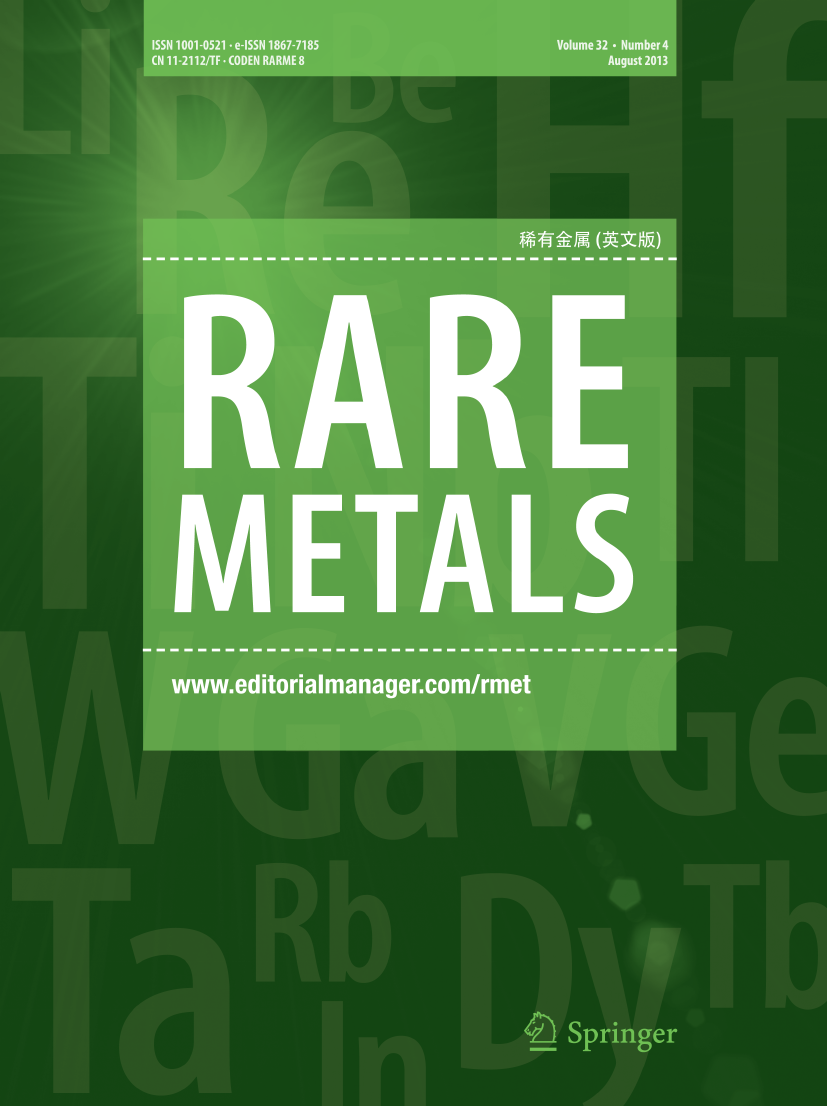摘要
铜钛合金是一种综合性能优异的弹性铜合金。它们常用于电子和电气领域。然而,Cu-Ti 合金在制备过程中可能会出现不连续析出,从而导致机械性能显著下降。为了解决这一问题,本文设计并制备了三种不同铁含量的铜钛合金(Cu-2.7Ti、Cu-2.7Ti-0.1Fe 和 Cu-2.7Ti-0.2Fe),以研究铁对不连续析出的影响。结果表明,在任何给定的老化时间和温度下老化后,蜂窝结构的面积分数随着铁含量的增加而减少。在铜钛合金中添加铁后,β'-Cu4Ti 相和β-Cu4Ti 相中都掺杂了铁。对于 450 °C/144 h 时效的 Cu-2.7Ti-0.2Fe 合金,β'-Cu4Ti 相和β-Cu4Ti 相中的铁含量分别为 1.59 at% 和 0.90 at%。拉伸试验表明,在相同的时效处理条件下,Cu-2.7Ti-0.2Fe 合金具有更好的机械性能。第一性原理计算证实,通过掺杂铁降低了β'-Cu4Ti相的内聚能,从而提高了其热力学稳定性。同时,β-Cu4Ti 相的形成焓因铁的掺杂而普遍升高,使其难以生成。总之,在 Cu-Ti 合金中添加铁可以通过掺杂铁抑制析出物中的不连续析出,有助于改善力学性能。

Cu–Ti alloys are a kind of elastic copper alloys with excellent comprehensive properties. They are often used in electronic and electrical fields. However, discontinuous precipitation may occur during the preparation process of Cu–Ti alloys, and they can lead to the significant deterioration of mechanical properties. To solve this problem, three Cu–Ti alloys with various Fe contents (Cu–2.7Ti, Cu–2.7Ti–0.1Fe and Cu–2.7Ti–0.2Fe) were designed and prepared in this paper to investigate the effects of Fe on the discontinuous precipitation. The results showed that after aging at any given aging time and temperature, the area fraction of cellular structure decreased with the increase of Fe content. The addition of Fe into Cu–Ti alloys resulted in Fe doping in β'–Cu4Ti phase and β–Cu4Ti phase. For 450 °C/144 h-aged Cu–2.7Ti–0.2Fe alloy, the Fe content in β'–Cu4Ti phase and β–Cu4Ti phase was 1.59 at% and 0.90 at%, respectively. The tensile tests showed that under the same aging treatment conditions, Cu–2.7Ti–0.2Fe alloy possessed better mechanical properties. First-principles calculation confirmed that the thermodynamic stability of β'–Cu4Ti phase was enhanced by decreasing its cohesive energy through Fe doping. At the same time, the enthalpy of formation of β–Cu4Ti phase was generally increased by Fe doping, making it difficult to generate. In short, Fe addition in Cu–Ti alloys suppressed discontinuous precipitation by Fe doping in the precipitates and helped to improve mechanical properties.
Graphical abstract

 求助内容:
求助内容: 应助结果提醒方式:
应助结果提醒方式:


